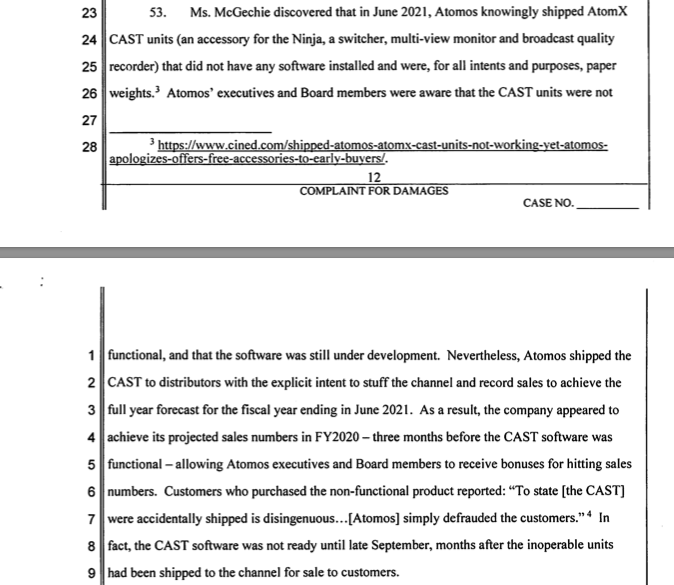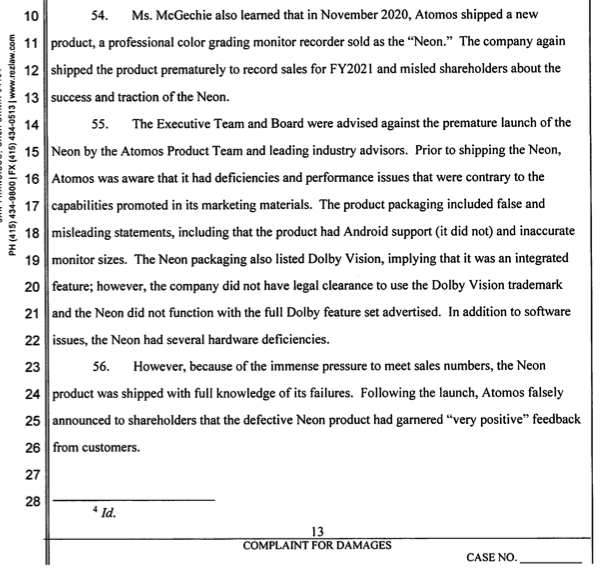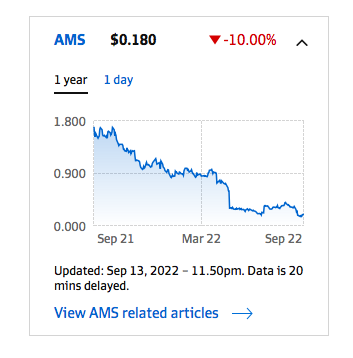Leaderboard
Popular Content
Showing content with the highest reputation on 09/17/2022 in all areas
-
I watched this some time ago and unfortunately can't find my notes (I did it blind and made notes before I got the answers). I've done a number of these tests before and normally they compare a number of cameras at a similar quality level and of a similar vintage, and in those cases I rank things mostly in order of ascending price! This test was different though and tended to correlate with the cost of the camera but also how good the codec was, with the low bit-rate bit-depth codecs not looking as good. This is great advice but no-one wants to hear it. We've gone through three phases that I can see: At first non-Hollywood wanted higher resolution and higher quality digital because digital was inferior to film. During this phase Hollywood just shot film. Then Hollywood went to high quality 2K (Alexa etc) and the consumer market was justifiably dissatisfied with their low quality 4K cameras with poor codecs and colour science. The manufacturers were pushing higher resolution to try and sell more TVs and the consumer market bought into the hype, demanding more low-quality pixels rather than understanding that they needed better pixels rather than more of them. Unfortunately, Hollywood has now succumbed to this resolution hype as well (largely kick-started by RED and Netflix purely for business purposes with nothing to do with image quality itself). Normally I'd say "to each their own", but unfortunately it means that those that want to buy a new camera have to pay for all the BS resolution that the gullible market has demanded. To get a great looking 2K timeline you have to either: Use a low-resolution high-quality camera from 2010-2015 with their support issues, crap battery life, poor pre-amps, and lack of modern features Use a modern high-resolution high-quality camera to record ridiculous file sizes like 4K uncompressed RAW, 8K uncompressed RAW and then put those on a 2K timeline, costing you a heap in storage and computation Use a modern high-resolution high-quality camera to send ridiculous resolution images to an external recorder that downsamples to something sensible and then uses a high-quality codec (like 2K compressed RAW, 2K Prores 4444, or maybe ~2.5K Prores) The missing combination here is for the camera to downsample in-camera and to write a high-quality but sensible-resolution file onto the card, but this option is very rare You can post about image quality until you're blue in the face, but people either can't (or don't want to) see past the marketing BS from TV companies that tells them that they need to quadruple the resolution of their camera every 5 years, even though it has almost zero effect on image quality.5 points
-
In May 2022, just over six months after her appointment as CEO, Estelle McGechie was fired from Atomos due to her being unwilling to re-locate to Australia. At the time, it seemed a bit odd because you would have thought that her appointment to that senior role would have been contingent on her re-location from the get go. According to a suit that she has now filed in the US, she claims that there was more to it than her relocation. A lot more. In addition to her claims about gender discrimination and a toxic corporate culture at Atomos, there are also allegations that there was 'rampant illegality' at the company with regards to shipping out 'dud' products to fraudulently inflate sales figures to meet projected targets. One example product mentioned in her filing is the CAST switcher add on for the Ninja V range which was shipped without any functioning firmware. The other product mentioned is the Neon grading monitor which shipped with know deficiencies that rendered it outside of the capabilities detailed in its marketing literature and packaging. The CAST product interests me because I've been surprised that for something that is such an appealing product (turns your Ninja V into an ATEM) there has been very little buzz about it since it was launched and comparatively few reviews on YouTube and certainly none from the past few month. Possibly now not as surprising as I'd originally felt. The share price of Atomos in the past twelve months certainly wouldn't have been bringing a nice warm glow to investors anyway, but this latest news has knocked it further. Needless to say, Atomos have refuted all of Estelle McGechie's allegations so it will be interesting to see how this pans out. Full story here : https://www.afr.com/rear-window/ex-ceo-alleges-rampant-illegality-at-ellerston-regal-backed-atomos-20220831-p5be2q1 point
-
I just watched a video where Kraig Adams (who is a professional travel film-maker on YT) sold his A7S3 to swap to using the iPhone 14 as his main travel camera (except for his drone). He's got 700K+ subs and used to be a professional wedding film-maker, and really knows how to edit footage with music etc. He's shot with 5D/ML etc so does know what good images look like. You could say that phones have gotten so close to prosumer cameras that they're replacing proper cameras, but I'd say it a different way - that prosumer cameras have become so shit and everyone has gotten so used to it that you may as well go to a phone because there's so little difference in image quality. I don't think that there will be a fourth phase. There are huge parallels here between audio and cameras. In audio, there were three phases. At first, everyone used analog because digital didn't exist or was awful. Then high-end pros used high-end analog and everyone else used mediocre transistors / digital but weren't happy about it (unless they were spec-heads who claimed to be happy because the specs said it must be good). Now, solid-state and digital has gone up enough, and expectations gone down enough, that everyone except the true high-end uses digital and solid-state electronics. The parallel doesn't end there either, as not only does the majority think that the 'old stuff' is worse because the specs on paper are worse (which happens if you measure the wrong things) but also people aren't aware of how good the high-end really is. Aesthetically, the vintage stuff was 'musical' but not 'impressive', and the modern stuff was 'impressive' but only moderately 'musical'. The super-high end is both and has to be heard to be believed. To give you a sense of it, I'm talking RRP of $400K and up. I think of it as emotion vs brain - which translates directly to cameras - emotions translate to motion and colour science and the right amount of sharpness and brain translates to resolution. I think that the mediocre spec-driven market will get better and better to the point that everyone will settle. I don't know what will happen once 8K is ubiquitous, as pushing 12K or 16K seems like it is completely pointless, but having said that, if blind tests show that most can't tell the difference between 4K and 2K then 8K is beyond pointless already. But the two things you should never make the mistake of underestimating are: the creativity of marketing departments to come up with new things you should care about, and 2) the gullibility of consumers to adopt these things, even in direct contradiction of their senses.1 point
-
The DJ1 is $329; the Hero 11 is $399 with FREE subscription. That price difference does not seem to be so significant given the very real advantages of the Hero 11. The 120 Mbps bitrate (HEVC) and 10bit color are available for all modes.1 point







